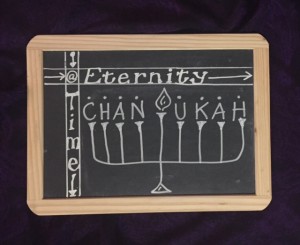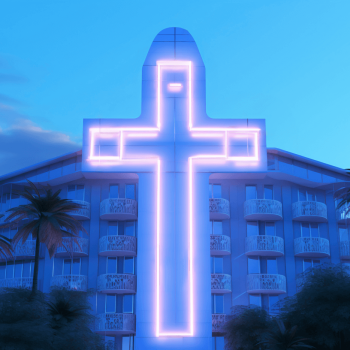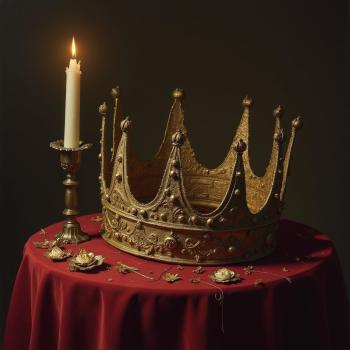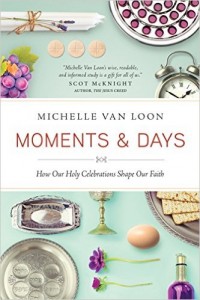Chanukah (or is it Hanukkah, Hannukah, Chanuka, Chanukkah, Hanuka, Channukah, or maybe Chanukka? Click here to get the story behind all those spellings!) begins this year at sundown on Sunday, December 6th. It is not the Jewish Christmas. However, it is important to remember that the events surrounding Jesus’ birth couldn’t have happened had the events commemorated by Chanukah occurred a century and a half before Joseph and Mary made the trek from Nazareth to Bethlehem.
The Jewish festal cycle and the Christian calendar each offer holidays that are meant to serve as an on-ramp into the intersection of time and eternity. These days of yes point us beyond our own everyday agendas and connect us with our place in a bigger, more beautiful story. If you attend a non-denominational congregation, your church may focus primarily on Christmas and Easter along with non-holiday holidays like Mother’s Day, Father’s Day and Church Picnic Day. If you attend a liturgical congregation, you’re likely familiar with the rhythms of the Church calendar, which recounts the story of Jesus’s life through a yearly cycle of observance. If you have a Jewish background or attend a Messianic congregation, you recognize the distinct cadence of the Leviticus 23 feast cycle and historical holidays of the Jewish calendar.
For each one of us who loves the Scriptures and wants to get to know the Author of those Scriptures better, each holiday in the Jewish calendar and the traditional Christian calendar is an opportunity to learn – and then take that learning off the page/screen and consider how to include it in your own practice. Throughout the year, this blog will feature a 5-minute intro to each main holiday or season found in both calendars.
Who?
This account of this holiday’s story is found in the Apocryphal books of 1 and 2 Maccabees, which means it is not included in either Jewish or Protestant Bibles. However, Catholic and Orthodox Christian Bibles include these books. There is a brief mention of the eight day/night feast in the New Testament in John 10:22.
These stories detail the heroism of a Jewish priest named Matthias who took refuge in the Judean hills west of Jerusalem after a wave of persecution by the Selucid (Greek) king Antiochus IV Epiphanes in 175 B.C. Matthias gathered a band of holy warriors around him to reclaim Jerusalem and cleanse the holy temple from Selucid control. They came to be known as the Maccabees. The name was likely derived from the nickname of “hammer” given to Matthias’ ferocious son, Judah. Click here for a 2-minute video for children that summarizes the background of the story.
What?
In 164 B.C., the Maccabees regained control of the Temple in Jerusalem. The priests who entered the defiled space immediately set to work reconsecrating it for worship to God. They found enough pure oil to relight the Temple’s lampstand as part of the dedication of the space to God. However, oral history from the period recounts that though there was only enough fuel for one day, the lamp’s flame burned for eight miraculous days, which gave the Maccabees enough time to prepare a fresh supply. Seeing the light burn once again in the holy place after years of darkness and idol worship must have been pure joy for Judah and company. The celebration of this victory became Chanukah, also known as “The Festival of Lights” or “Feast of Dedication”. The holiday teaches about the nature of courage in the acts of the priests-turned-warriors, the Maccabees. Judah and his fighters were driven by their desire to worship God as he’d called them to do, free from oppression by pagan rulers.
When?
As the Jewish calendar is based on a lunar cycle, the dates of the holiday, which begins on the 25th of the Jewish month of Kislev, float from year to year on a Gregorian calendar. The earliest it can possibly appear is the 20th of November. The latest is the 18th of December.
Where?
The nine-branched candelabrum known as a chanukiah (more popularly, menorah) is the most visible symbol of this holiday. Click here for a more detailed description aimed at a Christian audience of the way in which the chanukiah is to be lit each evening, prayers and Scripture readings for the holiday, and rules for the game of dreidel, a fun gambling game associated with the holiday. Fried foods, such as potato pancakes (latkes) and donuts (sufganiyot) which point to the oil in the Temple’s menorah, are a delicious way in which families around the world mark the feast. Click here to sample some delicious recipes.
Why?
The happy holiday teaches about the nature of courage in the acts of the priests-turned-warriors, the Maccabees. Judah and his fighters were driven by their desire to worship God as he’d called them to do, free from oppression by pagan rulers. It also points to the One Judah and company desired to worship – a miracle-working God whose glory was proclaimed by the eight days of light in the newly-rededicated Temple.
And just for fun, a Chanukah song by acapella group The Maccabeats that made the rounds a few years back:
















